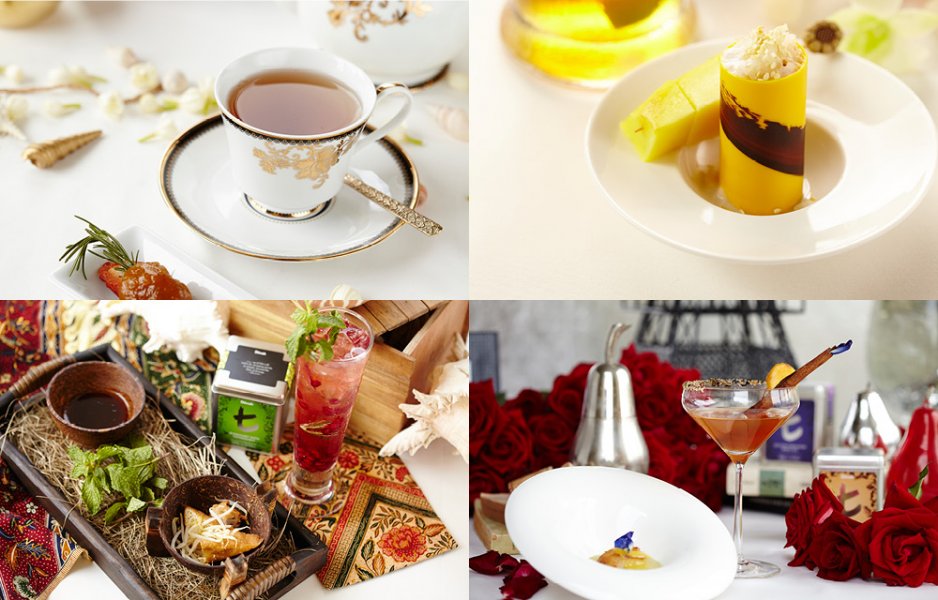
1. Know your terroir
Teas, just like wine, are highly dependent on the soil and climate they grow in. That’s why different regions produce different teas that are uniquely different from one another in terms of flavour, aroma and mouth feel. Formerly known as Ceylon by the British, the world’s best teas are grown in Sri Lanka. There are three main tea growing regions—mid, low and high—depending on their altitude. Low grown teas portray a powerful malt flavour, dark tones and heavy notes. High grown teas can be extraordinarily light, with honey tones and grassy aromas.

2. It’s all in the leaves
The process of making tea—hand plucking, rolling, fermenting and baking—has been perfected over centuries. But in recent decades, the CTC method (crush, twist and curl), has been used by many companies because it produces a homogenous flavour and a lot of colour when used in tea bags. Sadly, it also robs the tea of much of its subtleties, local character, body and antioxidant properties. Therefore, look for teas (like Dilmah Real Tea) that make tea in the more ancient “orthodox” artisanal method that preserves the uniqueness, the body and character of tea.

3. Brew it like a pro
Use good water. If your tap water is bad, get bottled water. Don’t re-boil your water. By doing so, you are changing the amount of dissolved gases in the water and giving it a slightly metallic taste. Pour about 200- 250ml of hot water for one tea bag—that’s about the size of a regular cup. For black tea, pour boiling water on the tea and let it brew for 3-5 minutes. For green tea, boil the water and let it cool to about 85-90°C first, and brew it for only 2 minutes. Don’t exceed 3 minutes or the green tea will get bitter.

4. Perfect pairings
Tea’s natural tannins make it a wonderful companion for food. And we don’t just mean as a drink. Incorporated into recipes, tea can add a layer of complexity and depth, while balancing other flavour notes. Last year, the Shangri-La won Dilmah’s Real High Tea Challenge (see below) with bold recipes such as the Phuket Mud Crab and Nori Sandwich on Squid Ink and Poppy Seed Bread paired with “Extra Special Twist” Sencha Green Extra Special. Delicious!

5. Keep it natural
Strong black teas (like the Dilmah Brilliant Breakfast) can be served with milk and sugar. But most other teas are best served straight: green teas (Sencha, Jasmine Green Tea), infusions (Chamomile) and flavoured Black teas (Rose with French Vanilla and Earl Grey) must be served without milk or sugar in order for their subtle flavour notes to shine through. So take it easy on the enhancements. You want to be able to enjoy the full flavour of a great tea.
Join The Dilmah Real High Tea Global Challenge 2015!

In partnership with some of the world’s very best hospitality venues and restaurants, Dilmah launched the Dilmah Real High Tea Challenge back in 2007. Judged by a panel of experts, celebrated chefs from all around the world will compete to create the most innovative and flavourful pairings and tea-inspired dishes revolving around real tea. The Dilmah Real High Tea Challenge for Cafes and Restaurants involves some of the most celebrated venues in Bangkok, ushering in our 21st century afternoon tea revolution and demonstrating high tea is a culinary experience that goes well beyond cucumber sandwiches. The competition also aims to strengthen tea appreciation all over the world. In fact, the winner of the Dilmah Real High Tea Challenge for Cafes and Restaurants will be invited to Sri Lanka to deepen their knowledge of tea in its most reputable growing region. Visit these participating venues, join our movement for better tea and discover the winner of the Dilmah Real High Tea Challenge.
Brought to you by Dilmah.

 Brought to you by Dilmah.
Brought to you by Dilmah.





